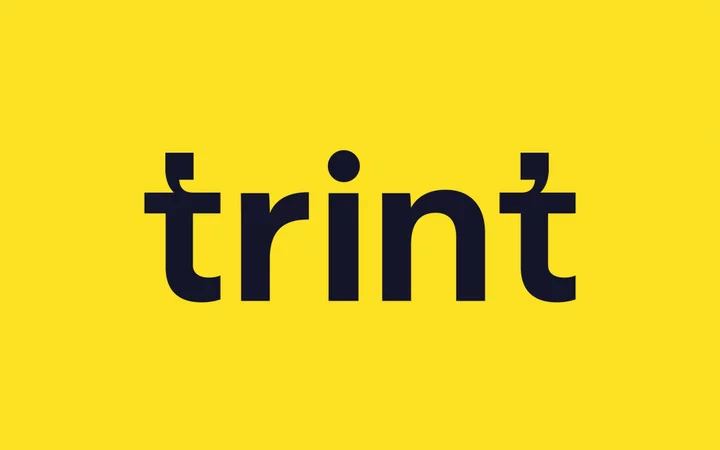Founded in 2014 by a journalist, Trint is an online transcription service designed with the media in mind. You upload audio or video files to this web-based service, and Trint sends you back either machine-generated text transcripts or captions. Collaborative features make Trint a good, if pricey, choice for people who work in media, be it podcasting, scripting, or print. Trint doesn't have the option to upgrade to a human transcriber for more accurate final products, something our Editors' Choice winner Rev offers. It also can't transcribe conversations in real time, the way Otter, our other Editors' Choice, does.
How Much Does Trint Cost?
Trint offers a free seven-day trial, which is a good way to give the product a spin before committing to a subscription. That's especially important, given that Trint is the most expensive transcription service we've reviewed. The Starter plan is $60 per person per month or $576 per year if paid upfront, which works out to $48 per month. With this plan, you can only upload seven files per month, though Trint doesn't specify how long they can be. Compared with Rev, which charges $30 per month for 1,200 audio minutes of transcription, that's expensive.
Trint’s Advanced plan costs $75 per person per month ($720 per person per year if you pay annually), and you get "unlimited" uploads, translation into 54 languages, and use of Trint's mobile apps for Android and iPhone. The caveat for “unlimited,” says Trint's website, is that it "applies to day-to-day usage" and "you'll almost never hit it." That said, the company will warn you if you get close. For teams that work with large amounts of audio, it may be worth contacting Trint's sales team to determine if the Advanced tier is sufficient or if an Enterprise account with custom pricing would be better. We reached out for clarification but have not received an answer.
When you cancel a subscription, you only have access to Trint and all the files in your account until the end of the paid billing cycle. You can, however, pause your plan for $5 per month to keep access to your files if you don't need any new transcriptions during that month. There are no à la carte services, so beyond the seven-day free trial, Trint requires at least a 30-day commitment.
Pricing for most transcription services isn't simple, with either confusing subscriptions or a bevy of upsells to the base price. For example, TranscribeMe has a draft rate starting at 79 cents per audio minute, but it doesn't include timestamps or speaker identification. For that, you need to pay a minimum of $2 per minute for the verbatim rate. GoTranscript has rates as low as 84 cents per audio minute, though that's only for if you have more than 10,000 minutes of audio recording and can wait five days to receive the finished files. Scribie, which we recommend for people who only use a transcription service occasionally, charges $1.25 per audio minute for human transcription, and it's extremely accurate. Rev's prices for human transcriptions are higher, starting at $1.50 per minute, though Rev's website and tools are better.
(Credit: Trint/PCMag)Getting Started With Trint
Trint is web-based, so there’s nothing to download to your computer. It works well on Chrome (recommended), Edge, Safari, and Firefox. You have to give it access to your microphone and approve additional permissions to integrate with Zoom or any other app that Trint can integrate with.
Trint works with a variety of file types, including MP3, MP4, M4A, AAC, WMA, AVI, WAV, and MOV.
To create an account, you need either an email address and password or to authenticate via a Google, Facebook, or Apple account. Once you’re logged in, the user interface is well laid out and easy to use.
(Credit: Trint/PCMag)Trint's dashboard is highly navigable. It's simple to find your way around. A guided tutorial and pop-ups introduce new features, though it’s easy to skip them if you’d rather explore on your own. The dashboard is where you find all your completed transcripts.
To create a transcript using Trint, either upload an audio or video file to the dashboard or set Trint to integrate with a virtual meeting through Zoom. You can't actually record from your Trint account when you're logged in on a desktop or laptop computer, though you can record using the Trint mobile apps. While it's useful to get transcripts of your Zoom calls, some Zoom subscriptions already include them, and Otter not only transcribes Zoom calls but can do it in real time and spit out a summary of the call as well.
Once your file is uploaded or your meeting is complete, Trint gets to work transcribing. While Trint doesn’t transcribe audio in real time like Rev and Otter, it is pretty fast. Our two-minute test file took less than 30 seconds to transcribe, and a 35-minute file took only 11 minutes. Other apps estimate closer to three minutes of processing for every minute of audio. Completed files appear on the left side of the user dashboard under My Drive and can be opened and edited from there.
(Credit: Trint/PCMag)Editing in Trint
Trint has strong editing tools—particularly its story builder feature. The editing interface is simple and looks a lot like Rev's and Otter's. Clicking on the Trint logo at the upper left is the quickest way to return to the dashboard.
While editing in Trint, it also takes just one click and a few seconds to translate any transcribed file into one of the 54 languages available in Trint. For the purpose of testing transcription services, PCMag does not evaluate translation.
The story-building feature is what really sets Trint apart. By adding multiple audio or video files to one Story, you can clip certain quotes or sections on the left side of the screen and use them to build a story or script on the right. Clipping the text also loads the corresponding audio to the storyboard, so you can weave together various conversations to tell a story. This is what makes Trint such a good fit for those in media or content marketing.
(Credit: Trint/PCMag)Once transcripts and stories have been edited within Trint, one click in the row of controls exports the document. Files can be exported as text, audio, or video files. Users can also choose to export the entire transcript or just the highlighted portions, which is a helpful feature for trimming out unnecessary parts of any conversation. Helpful tutorials pop up throughout the Trint dashboard, all quite intuitive and user-friendly.
(Credit: Trint/PCMag)How Accurate Is Trint?
Trint is one of the most accurate AI-based transcription services we've tested. To evaluate the service, We uploaded a two-minute audio recording of me reading a passage aloud from Marguerite Henry’s “Misty of Chincoteague” series. It's a good test because it has place names that are difficult to spell, like Assateague, Pocomoke, and Chincoteague. We use the same audio recording to test other transcription services.
Trint made only two true errors and a few punctuation and capitalization errors. Both errors were the names of places, which was common for almost all the transcription services except Scribie, which got them all right. Editors' Choice winners Otter and Rev made four and six word errors, respectively. Otter had additional errors related to punctuation and capitalization, which is common with automated transcription services. TranscribeMe made seven errors, counting proper nouns and punctuation together.
A customizable dictionary in Trint lets you add proper nouns or industry-specific words the service may fail to transcribe correctly. So, if you use it often for audio recordings in the same field, you may be able to effectively improve its accuracy with a little time and effort.
Trint Safety and Security
Trint is transparent about its data security features, which the company lists under its FAQs. Transcripts for North American users are stored at Amazon Web Services in northern Virginia. Trint follows US data privacy laws and uses end-to-end encryption. Trint does not support multi-factor authentication, however. Right now, your options for logging in are a standalone email and password combo or to authenticate via Google, Facebook, or Apple. Enterprise users have the option to mandate single sign-on for their users.
What Is Two-Factor Authentication?Trint is not HIPAA compliant, so medical professionals can't use it for their work. If you need a HIPAA-compliant service, take a look at the special plans for medical and healthcare industries offered by Rev or TranscribeMe.
A Unique Service for a Niche Market
Trint is a quality transcription service designed by a journalist for others doing similar work. The ability to clip and merge various audio files is unique and useful for those who write articles or build scripts. Trint’s transcriptions are accurate, leaving you with a clean document in minutes. But with a high price and subscription-only plans, Trint isn't for most people. Editors' Choice Rev is our top pick if you need the option of human or automated transcriptions, and Editors' Choice Otter is best for automated transcriptions, especially those done in real time.









